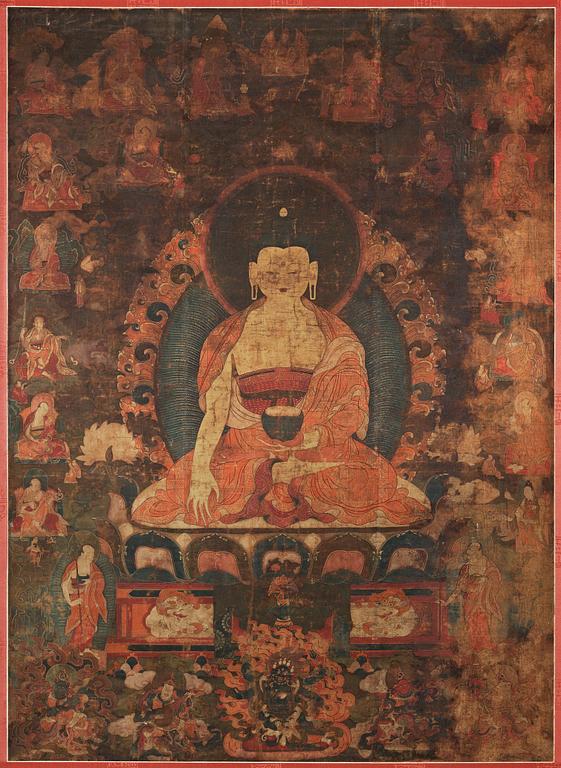THANGKA, Shakyamuni Buddha med de aderton arhats, 1700-tal.
Färgpigment på bomullsduk. 105,8 x 77 cm. Monterad som rullmålning.
Fuktskador, defekter.
Övrig information
In this highly symmetrical painting, Shakyamuni is seated in the center on a throne, accompanied by his two main human disciples, the enlightened monks Shariputra and Maudgalyayana. Shakyamuni Buddha, holding his begging bowl and showing the earth-witness gesture, is also surrounded by the sixteen arhats together with the group's two adjuncts added from the Chinese tradition. At the top center is a lama portrayed (possibly Tsong Khapa), and at the bottom are the four heavenly kings of the four directions: left to right, Virudhaka of the south holding a sword, Dhartarashtra of the east playing a lute, Virupaksha of the west holding a stupa, and Vaishravana of the north holding a jewel-vomiting mongoose. At bottom center a six-armed Mahakala.
This fine painting shows elements of the New Menri school. The execution is skillful with very fine details, and the colour tones are unusual with the dark brown, and blue setting off the more luminous orange, red and gold design details. The wide swelling chest and shoulders of the Buddha are elements found in styles that evolved in the 17th century, and became standard in the paintings of the 18th century.
































































